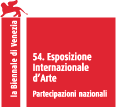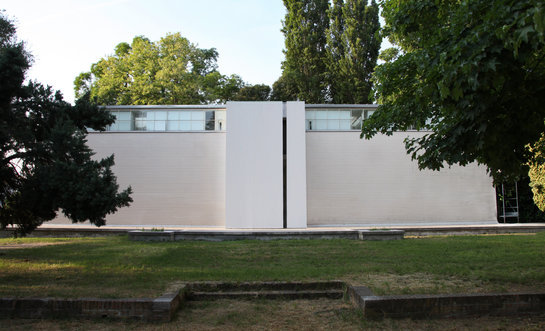Concept
The installation within the pavilion consists of a variety of small corridors that are laid like a labyrinth throughout the space. The visitor is, in a manner of speaking, choreographed through the pavilion. The space is not only divided into vertical axes, rather it more markedly receives a distinct horizontal division. The human body is therefore a central point of reference for the structure: the middle of the body, about at waist height, is the polarizing point for the intervention into the space. In contrast to the classical labyrinth, where the path begins on the ground and ends somewhere above eye level, here the anchoring is on the ceiling. The walls begin above, but don’t reach all the way to the ground.
Even though these structural components are clearly architectural elements, it is perhaps easier to explain the effect in psychoanalytical terms since the created space is more dissociative than actually fragmented - above, claustrophobic, below, unconstrained. Or, in other words: the head in the neurosis, the crotch, in the psychosis.
In contrast to Bruce Nauman’s or Robert Morris’s spatial sculptures, here the intervention is not autonomous, rather it is simultaneously a type of stage or environment for the display of different works. It is an attempt, on the one hand, to establish differing elements through contrasting placement but, at the same time, to disable distinct attributes. In this manner, the manipulated portraits from the end of the 19th and start of the 20th century that hang in two frontal rooms, which are already detached from their historical context through adaptation, experience a further alienation through the placement in the narrow passages.
The architectural intervention is echoed in the annex, where one single wall begins at the ceiling and ends at the navel. While one side remains white, the other serves as a surface for a format-filling projection. The projected film consists of two parts that simultaneously define each other. One runs in the right annex, the other in the left. The film aligns itself with the feeling or atmosphere of the entire pavilion. All the elements effect (affizieren) the psychophysical sensory system in different ways: through the removal of familiar distance, soundproof walls and diffuse light, which together create the effect of the unavoidable.
The entrance to the building is covered by a simple wall in which a small slit provides the only connection to the space beyond, of course too small to give an accurate impression. The visitor shouldn’t be prepared for the space; they enter from the side only to find themselves without forewarning in the corridor.

